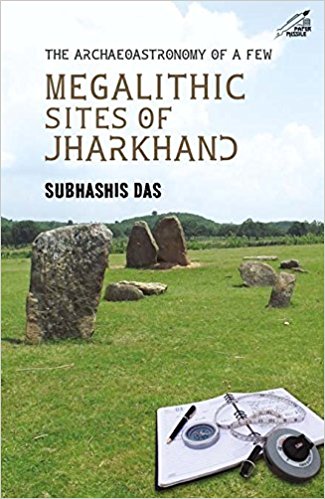By Kishori Sud
Title: The Archaeoastronomy of a Few Megalithic Sites of Jharkhand; Author: Subhashis Das; Publisher: Niyogi Books; Pages: 127; Price: Rs 695
If you are interested in archaeology, culture-studies and tribal studies, you know what Subhashis Das has in store for you. If not, the pool of knowledge on the rich megalithic sites of Jharkhand leaves you in awe, teaching you that the state in eastern India is much more than waterfalls, Jain temples of Parasnath Hill and the elephants and tigers of Betla National Park.
Das’ begins with an insightful observation of the late Swiss psychiatrist and psychoanalyst, Carl Gustav Jung: “Every man carries with him unconsciously the memory of ancient civilisations. Similarly, the rock is a fragment of the world’s memory.”

Jharkhand is one of the rare places in India where megalith-making continues today as a tradition. It has about 32 tribes of which four still continue with the ancient practice of megalith-building on the graves of the deceased.
The book sheds light on the fact that contrary to popular belief, not all megaliths are connected with death. While some of these served as commemoratives for special occasions or worked as boundary markers, some functioned as astronomical observatories.
A bit technical for a layman, “The Archaeoastronomy of a Few Megalithic Sites of Jharkhand” also tells you that the presence of hills on the horizon was a prerequisite for establishing megaliths.
Until now, such astronomical temples have only been found in the Hazaribagh and Chatra districts of Jharkhand. The author believes that more such megalithic temples exist elsewhere in the state, waiting to be discovered.
The text, loaded with technical terms and specific ratios and proportions, is supported by a number of images of artefacts, megaliths with detailed specifications like the size of the stones or rocks, distances and alignments.
The read is an extensive study on Menhirs, or standing stones; the large man-made upright stones found solely as monoliths, or as part of a group of similar stones. The alignments of these also hint at ancestor worship and regeneration of the earth.
Interestingly, in ancient times, hills were revered as the breasts and the vulva of the “omnipresent Mother Goddess”. Das says this was the time when a large section of the world believed in the now almost obsolete fertility cults.
Das has also researched on the newly-discovered Katia Murbey megalithic site, located in Chatra district. He believes the site is not a conventional megalithic burial site. Although in a terrible state of ruin, the land on which the temple rests seems to be artificially raised — a plat form from which one can observe the sunrises and sunsets.
Das also makes the interesting observation that the megalithic complexes — which also functioned as astronomical observatories — gradually changed with the spread of Brahmanism, Buddhism and Jainism in later times.















